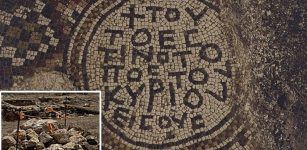On This Day In History: Battle of Devil’s Hole Was Fought – On Sep 14, 1763
AncientPages.com - On September 14, 1763, the Battle of Devil's Hole, also known as the Devil's Hole Massacre, was fought near Niagara Gorge in present-day New York state.
The conflict between the Seneca People and the British left a legacy of fright and superstition that remains on the grounds hundreds of years later.
The battle was between a group of the British 80th Regiment of Light Armed Foot and about 300 Seneca warriors during Pontiac's Rebellion (1763–1766). The Seneca warriors killed 81 British soldiers and wounded eight before they managed to retreat.
As early as 1757, Seneca in the Niagara Falls area had complained to the French about losing control of the long portage along an area of the Niagara River, which French traders were trying to improve for wagons. They resented the Europeans trying to take over their traditional territory and displace them from their work.
After the Seven Years' War, the British took over this area near the Great Lakes and was improved so it could accommodate oxen and wagons, and hired teams and escorts to carry goods through.
Pontiac chief. Image credit: John Mix Stanley
Discontent rose among many Native American tribes in the Great Lakes area, who wanted to eliminate the British colonists before more encroached on their lands.
In Pontiac's Rebellion, beginning in 1763, several tribes in the Great Lakes and Northwest area cooperated in rising up against the British.
In the New York colony, Sir William Johnson, the Superintendent of Indian Affairs, had long advocated fair treatment of Native Americans but was only partially successful.
He wrote,
"Our people in general are ill calculated to maintain friendship with the Indians. They despise those in peace whom they fear to meet in war."
On September 14, 1763, a large Seneca band of about 300–500 warriors ambushed a wagon train and its armed escort en route from Fort Schlosser to Fort Niagara as it passed through Devil's Hole, an area known for its difficult terrain. The escort party and teamsters were caught completely by surprise. The Seneca moved in to fight at close quarters, making musket fire useless, and only three of the party of 24 managed to escape to Fort Schlosser for help.
Camped nearby at Lewiston was a detachment of the British British 80th Regiment of Light Armed Foot from Fort Gray, heard the news of the ambush and rushed off to rescue the wagon train.
From a brush-covered hill commanding the trail, Seneca warriors attacked the soldiers about one mile from the wagon train. Once the British companies began to retreat, the Seneca moved to cut them off from the fort and killed "more than 80 soldiers."
The soldiers suffered a loss of 81 dead and eight wounded before withdrawing (or the entire rescue party was killed). Reinforcements from Fort Schlosser arrived shortly after the second battle but soon left, fearing another attack. When they returned several days later, they found the soldiers had been ritually scalped or their bodies were thrown into the ravine.
The attack had been planned by a Seneca chief known as Farmer's Brother, who led a large band that supported Pontiac. Because of the successful Seneca attacks, the British reinforced their position in Niagara when the Seneca had hoped to drive them away. Eventually, Sir William Johnson forced the Seneca to cede land in this area, which cut them off from traditional control of the river and portage, which had been a transportation route as well as a source of food and water.
The Seneca long contended to regain control of the river banks. Settlers mostly stayed out of the area until after the conclusion of the American Revolutionary War. Its settlement forced most of the Iroquois as British allies to Canada.
AncientPages.com
Expand for referencesReferences:






















